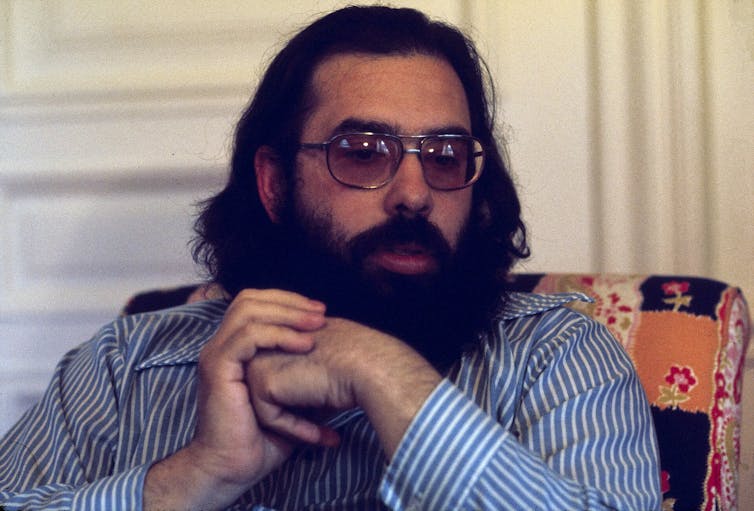In Defense of Francis Ford Coppola’s Megalopolis
Francis Ford Coppola has always stood as a titan of cinema, and his latest ambitious project, Megalopolis, aims to solidify that legacy despite its tumultuous reception. Released on September 27, this self-financed film—which cost a staggering US$120 million—has sparked conversations not only over its artistic vision but also its commercial viability, grossing a mere US$4 million during its opening weekend. While critics have declared it a financial disaster, I believe this viewpoint overlooks the profound implications of Coppola’s latest artwork.
 Francis Ford Coppola, a visionary filmmaker.
Francis Ford Coppola, a visionary filmmaker.
Revisiting the Roman Empire
From the outset, Megalopolis positions the viewer within a crumbling empire, akin to the fall of ancient Rome and paralleling contemporary America. At the heart of the narrative lies a young architect and scientist, portrayed by Adam Driver, embodying Coppola’s artistic struggles and triumphs throughout his storied career. Critics may view this film as a complex tapestry of themes—from political corruption to the quest for meaning in a fractured society—but I see it as a personal journey, encapsulating Coppola’s relentless desire to break free from the constraints of commercial filmmaking.
Coppola’s past triumphs are etched in cinematic history, with iconic works like The Godfather and Apocalypse Now. Yet, the winds of fortune have not always been favorable. His recent endeavors—Youth Without Youth, Tetro, and Twixt—barely made a ripple in the cinematic landscape. In contrast, Megalopolis serves as a testament to his unyielding spirit, transcending traditional narrative structures to forge a new path in the artistic realm.
An Allegory of Legacy
Further examination reveals that Megalopolis acts as an allegory for the Coppola family itself—an illustrious lineage synonymous with cinematic artistry yet facing the inevitable decline synonymous with any empire. Despite having talented offspring, such as Sofia and Roman, who have carved out independent filmmaking paths, one cannot help but notice a divergence from their patriarch’s grand vision. This thematic richness raises the question: what does legacy mean to a family intertwined with the fabric of Hollywood?
This reflection resonated with me deeply as I consider my own journey through the evolving landscape of the film industry. Watching the Coppola family navigate their role in this ever-changing narrative is akin to observing a grand opera in itself, filled with triumphs, failures, and the inevitable tragedies of creative life.
The Courage to Self-Finance
One of the most provocative aspects of Megalopolis is Coppola’s decision to self-finance this artistic venture, a bold move that offered him the creative freedom to explore complicated themes without the interference of studio executives. This lack of restraint, however, leads to a disjointed narrative that is referred to in some corners as a “hot mess.” But should we honestly hold a less conventional film to the same standards as commercially-driven projects?
Coppola’s dedication to constructing a film replete with kaleidoscopic visuals and radical ideas—touching upon everything from the state of American politics to philosophical musings on the nature of Empire—shows a man unfazed by criticism. As he dives into these eclectic themes, he risks alienating audiences, but could that gamble ultimately lead to profound discussions about art and its place in society?
 An artistic exploration in Megalopolis.
An artistic exploration in Megalopolis.
Misunderstood at Launch
The perceptions of Megalopolis as an epic fail are popular among critics, labeled “plainly nuts” and “bloated.” However, I argue that such assessments miss the forest for the trees. Could it be that Megalopolis is simply ahead of its time? Its eventual resurgence in discussions of cinematic history may mirror what happened with art movements that were initially rejected—think of how the works of Vincent van Gogh were deemed too radical for their time only to be celebrated posthumously.
As I wrestle with my thoughts about Coppola’s daring vision, I am often reminded of my own experiences with misunderstood art. It takes courage to present an unapologetic vision to the world, a sentiment I believe resonates with many creators battling against commercial demand.
The Future of Megalopolis
Ultimately, the failure of Megalopolis at the box office does not equate to its worth as a film. A project like this challenges the very foundations of what we define as successful filmmaking. After all, can a personal, unfettered expression still be deemed a triumph, even if it does not recoup its investment?
Several years down the road, I foresee Megalopolis finding a second life in streaming platforms and collections celebrating the work of its creator. It will not merely be “dead on arrival,” as some have claimed but rather a vital piece of cinema that future critics will reference as a misunderstood gem of the 2020s.
In conclusion, Coppola has succeeded in creating an audacious work that reflects the complexities of his life—both personally and artistically. Perhaps rather than dismissing his latest film, we should embrace it, celebrating the willingness to challenge norms in an era of formulaic filmmaking. Maybe, just maybe, Megalopolis is more than a fleeting failure; perhaps it represents a courageous exploration of what art can achieve when unbarred from commercial constraints.
Disclaimer: This article reflects my personal perspective and does not represent the views of any organization or individual.


 Photo by
Photo by 











